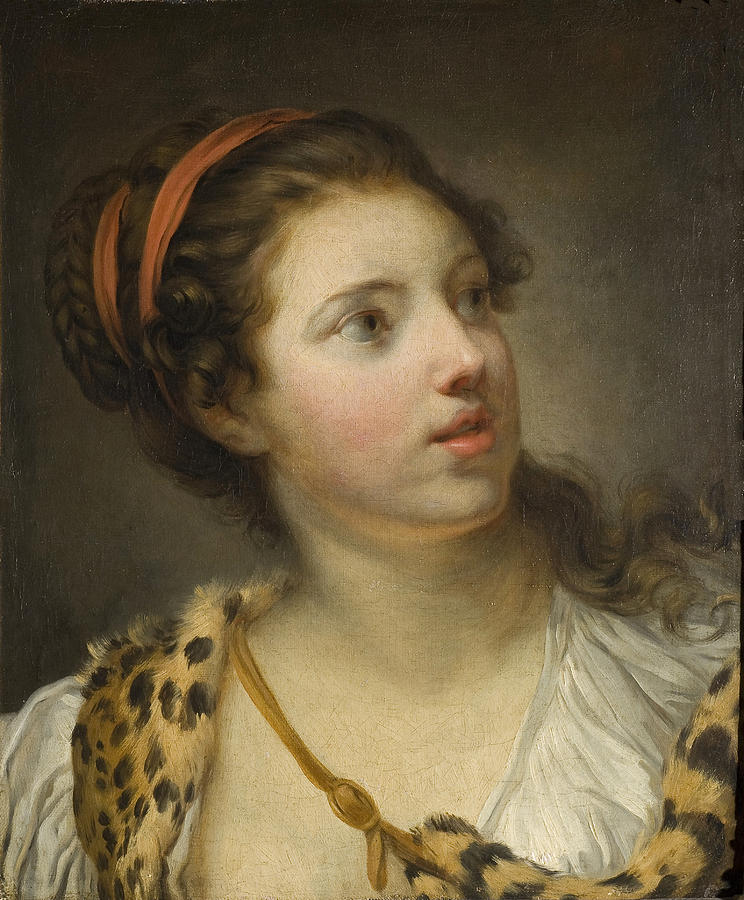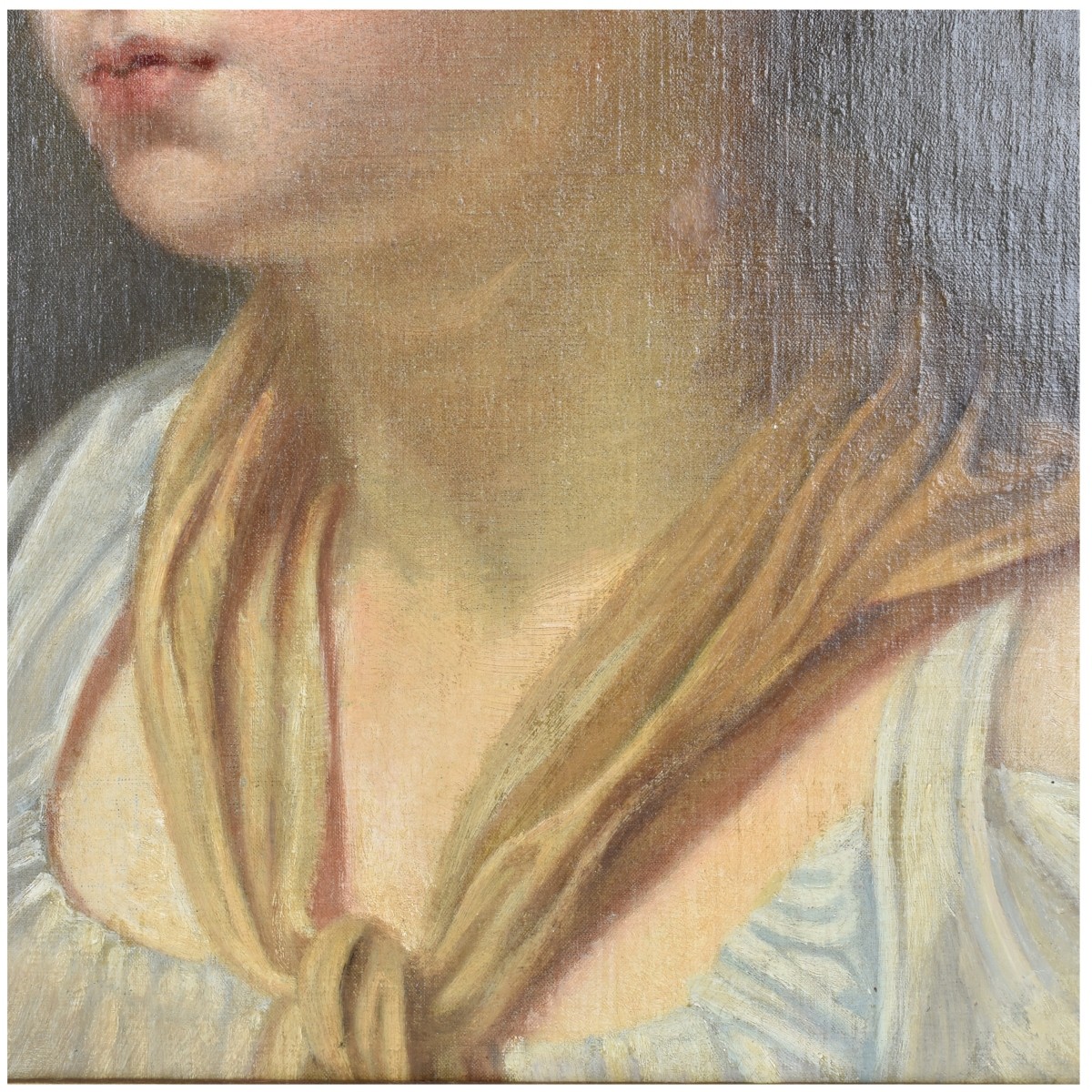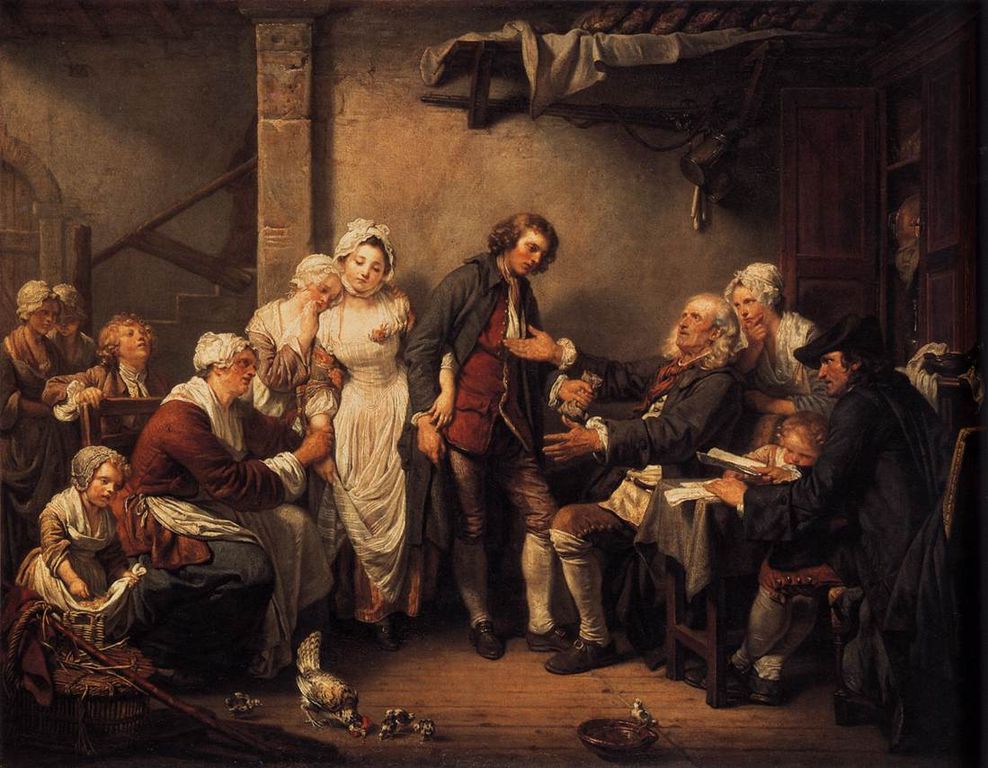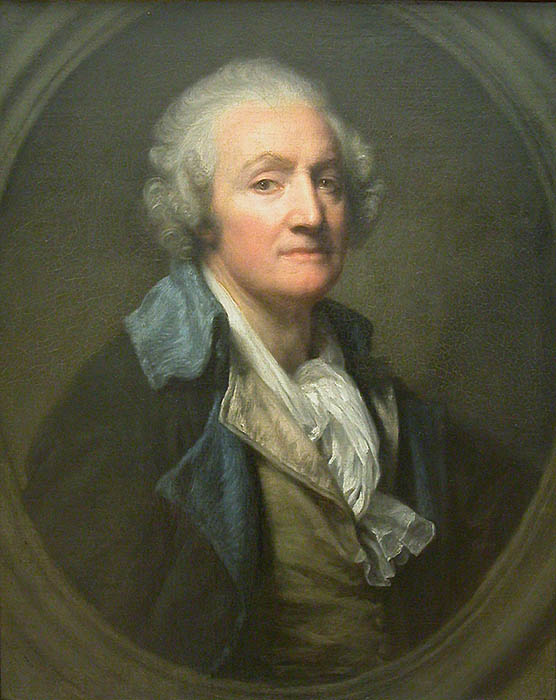
The Nymph Callisto Painting by JeanBaptiste Greuze Pixels
"Jean-Baptiste Greuze." Metropolitan Museum of Art Bulletin 47 (Winter 1989/90), pp. 14, 21, figs. 11-13 (color, overall and details), and color details on front and back cover, as the first in a series of works in which a shattered object symbolizes lost chastity; stresses the role of the "plainclothes Cupid, silently commenting on the.

JeanBaptiste Greuze Malédiction du Père Le Fils puni Fine art, Fine art painting, Painting
Jean-Baptiste Greuze (French pronunciation: [ʒɑ̃ batist ɡʁøz], 21 August 1725 - 4 March 1805) was a French painter of portraits, genre scenes, and history painting. Biography [ edit ] Early life [ edit ]

by JeanBaptiste Greuz AI Generated Artwork NightCafe Creator
Jean-Baptiste Greuze's work, while embodying aspects of the Rococo style, also drew heavily on the Dutch and Flemish masters of centuries prior. But his painting style was still very much his own creation. His domestic genre and moral paintings brought something new to eighteenth century French art and were indeed widely regarded as a genre in.
JeanBaptiste GREUZE (17251805) Catherine La Rose The Poet of Painting
Jean-Baptiste Greuze (French pronunciation: [ʒɑ̃ batist ɡʁøz], 21 August 1725 - 4 March 1805) was a French painter of portraits, genre scenes, and history painting. ID: 347139. Information from Wikipedia, made available under the Creative Commons Attribution-ShareAlike License.

1000+ images about Jean Baptiste Greuze on Pinterest Museums, Portrait and Epiphany
This theme was quickly taken up by artists such as the sculptor Jean Antoine Houdon, the portraitist Elisabeth Louise Vigée Le Brun, and the genre painter Jean-Baptiste Greuze. Further inspired by the philosopher Denis Diderot, who also believed that education was an important tool to moralize society, Greuze depicted several scenes featuring.

Lands rulers, dignitaries, statesmen The Universal Compendium
Greuze, Jean-Baptiste. Greuze, Jean-Baptiste (1725-1805). French painter. He had a great success at the 1755 Salon with his Father Reading the Bible to His Children (Louvre, Paris) and went on to win enormous popularity with similar sentimental and melodramatic genre scenes. His work was praised by Diderot as `morality in paint', and as.

After Jean Baptiste Greuze (1725 1805) O/B Kodner Auctions
Jean-Baptiste Greuze first achieved professional success in the Salon of 1755. His sentimental scenes found admirers among the upper middle-class public. At this time the art market had expanded beyond the wealthiest aristocracy, and a painting such a The Village Bride would have been a delight to the upper middle-class. It is easy to imagine.

JeanBaptiste Greuze JeanBaptiste Greuze Museum of fine arts, History painting, European
Title: Head of a Young Boy. Artist: Jean-Baptiste Greuze (French, Tournus 1725-1805 Paris) Date: 1763. Medium: Oil on canvas. Dimensions: 18 7/8 x 15 3/8 in. (47.9 x 39.1 cm) Classification: Paintings. Credit Line: The Friedsam Collection, Bequest of Michael Friedsam, 1931. Accession Number: 32.100.137.

JeanBaptiste Greuze Portrait painting, Portrait, Art
GREUZE, JEAN-BAPTISTE (1725 - 1805), French painter. Born in Tournus (Burgundy) to a prosperous middle-class family, Greuze studied art in Lyon in the late 1740s with the portrait painter Charles Grandon. In about 1750, he sat in on drawing classes at the Acad é mie Royal in Paris, and in 1755 became an associate member of the academy as a.

JeanBaptiste Greuze (17251805) Genre Rococo Era painter Tutt'Art Pittura * Scultura
Jean-Baptiste Greuze. A young woman wearing a blue silk cape is shown half-length looking out of a stone window. Her fashionably powdered hairstyle was known as the 'tête de mouton' ('sheep's head') and was popular in France in the 1750s. She rests her left arm on a piece of light beige cloth draped over the stone led.

JeanBaptiste Greuze
Jean-Baptiste Greuze lived in the XVIII - XIX cent., a remarkable figure of Rococo. Find more works of this artist at Wikiart.org - best visual art database.

JeanBaptiste Greuze Portrait of a Lady Arts Picturaux, Dame, Jean Baptiste, Opera Singers
Artist: Jean-Baptiste Greuze (French, Tournus 1725-1805 Paris) Date: ca. 1761. Medium: Red and black chalk over traces of graphite, watercolor and gouache. Dimensions: sheet: 12 1/8 x 17 7/16 in. (30.8 x 44.3 cm) Classification: Drawings. Credit Line: Purchase, Lila Acheson Wallace and Mrs. Howard J. Barnet Gifts, 2012. Accession Number: 2012.16

Biographie et œuvre de JeanBaptiste Greuze
Jean-Baptiste Greuze (1725-1805) Cannon Hall. (b Tournus, 21 Aug. 1725; d Paris, 21 Mar. 1805). French painter. He had a great success at the 1755 Salon with a group of paintings including Father Reading the Bible to his Children (Louvre, Paris) and he went on to win enormous popularity with similar sentimental and melodramatic genre scenes.

FileJeanBaptiste Greuze Self Portrait.jpg Wikipedia
French, 1725-1805. Considered to represent the highest ideal of genre painting in the mid-18th century, Jean-Baptiste Greuze won popularity with his sentimental, moralizing scenes. Greuze exhibited Father Reading the Bible to His Children at the 1755 Salon to great.. Discover and purchase Jean-Baptiste Greuze's artworks, available for sale.

"Untitled" JeanBaptiste Greuze Artwork on USEUM
Jean Baptiste Greuze was born in Tournus in 1725, sixth son of a master tiler. Legend has it that the young Greuze convinced his father of his natural aptitude for painting when he showed him a pen-and-ink drawing of Saint James, which his father mistook for an engraving. Greuze was sent to Lyon to study with the commercially successful.

Girl with a Doll (attr. to) Jean Baptiste Greuz as art print or hand painted oil.
The Laundress (French: La Blanchisseuse) is a 1761 genre painting by French artist Jean-Baptiste Greuze (1725-1805), existing in two versions. The subject of laundresses, also known as washerwomen, was a popular one in art, especially in France.. The prime version of The Laundress was one of fourteen works exhibited by Greuze at the Salon of 1761 and was part of the collection of Greuze's.